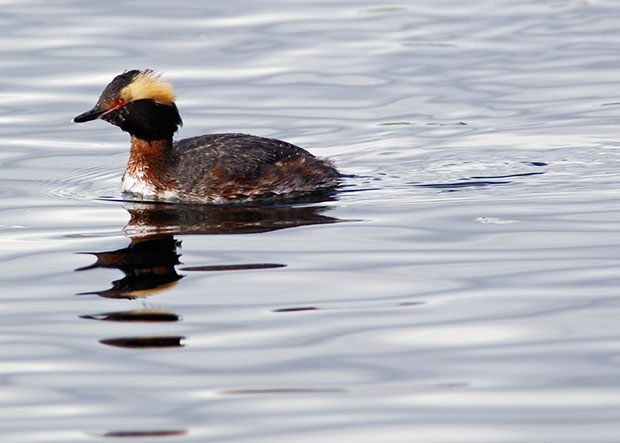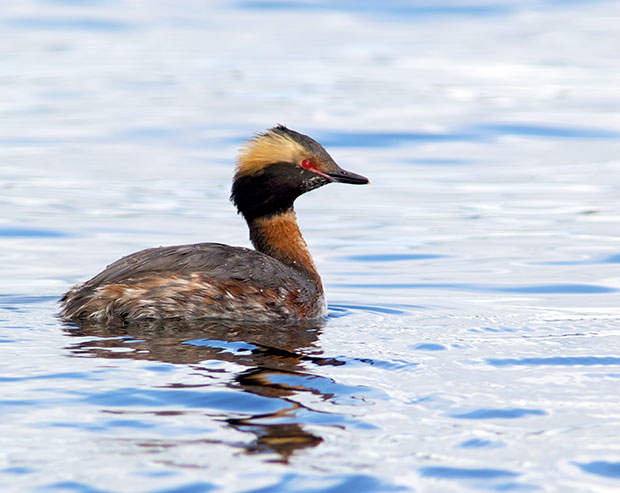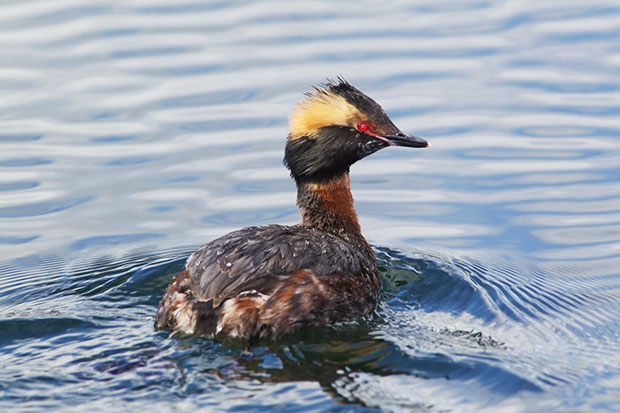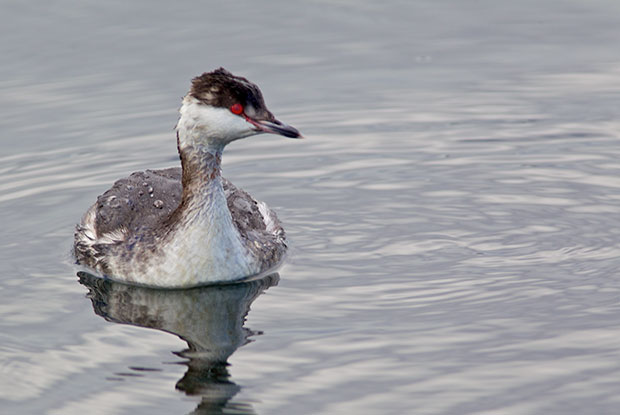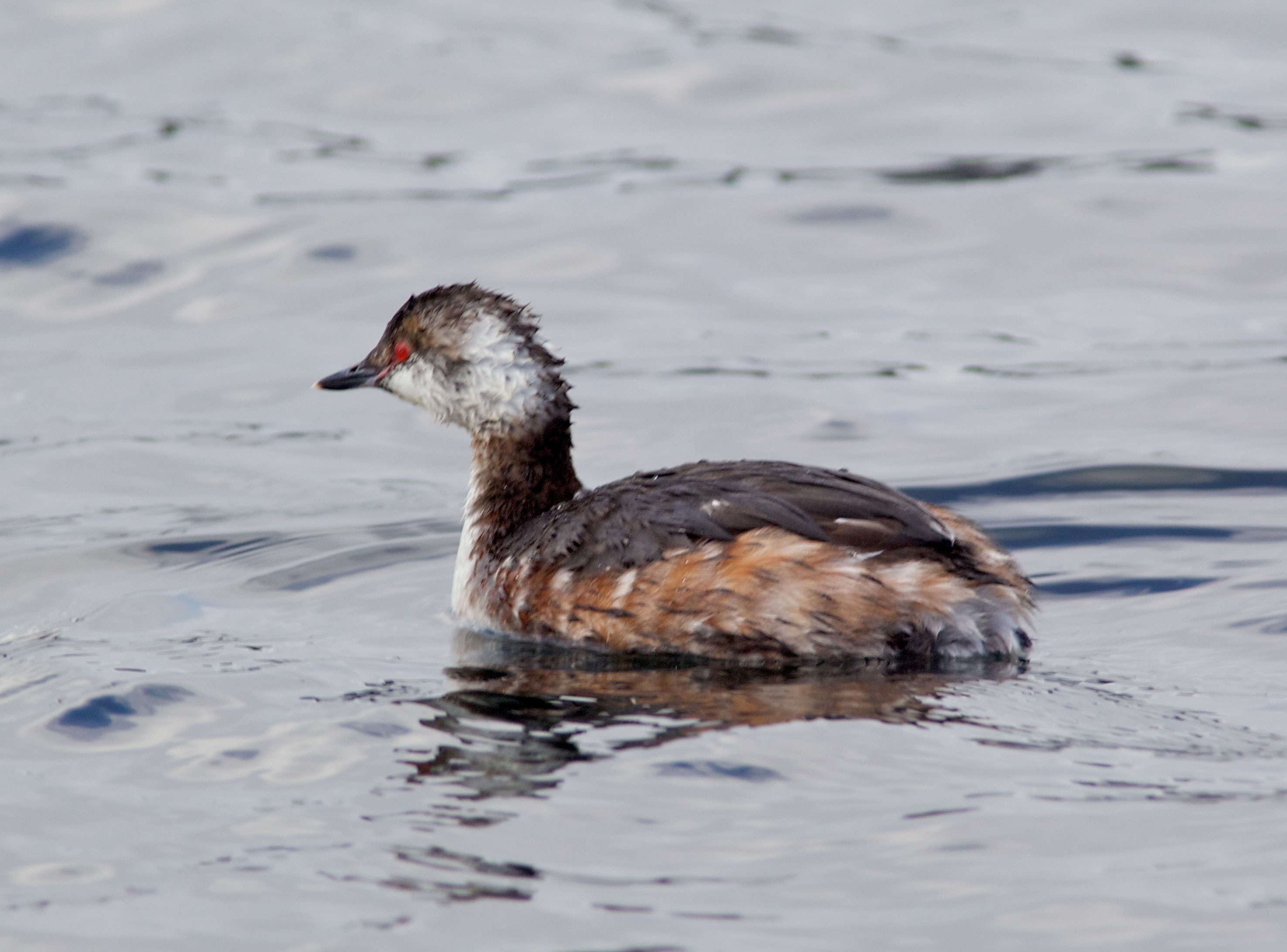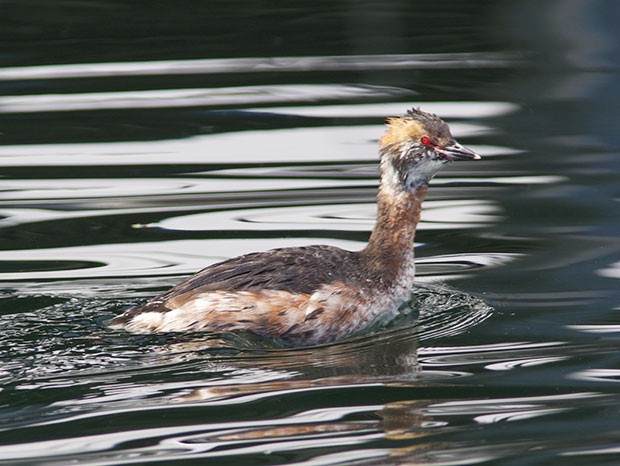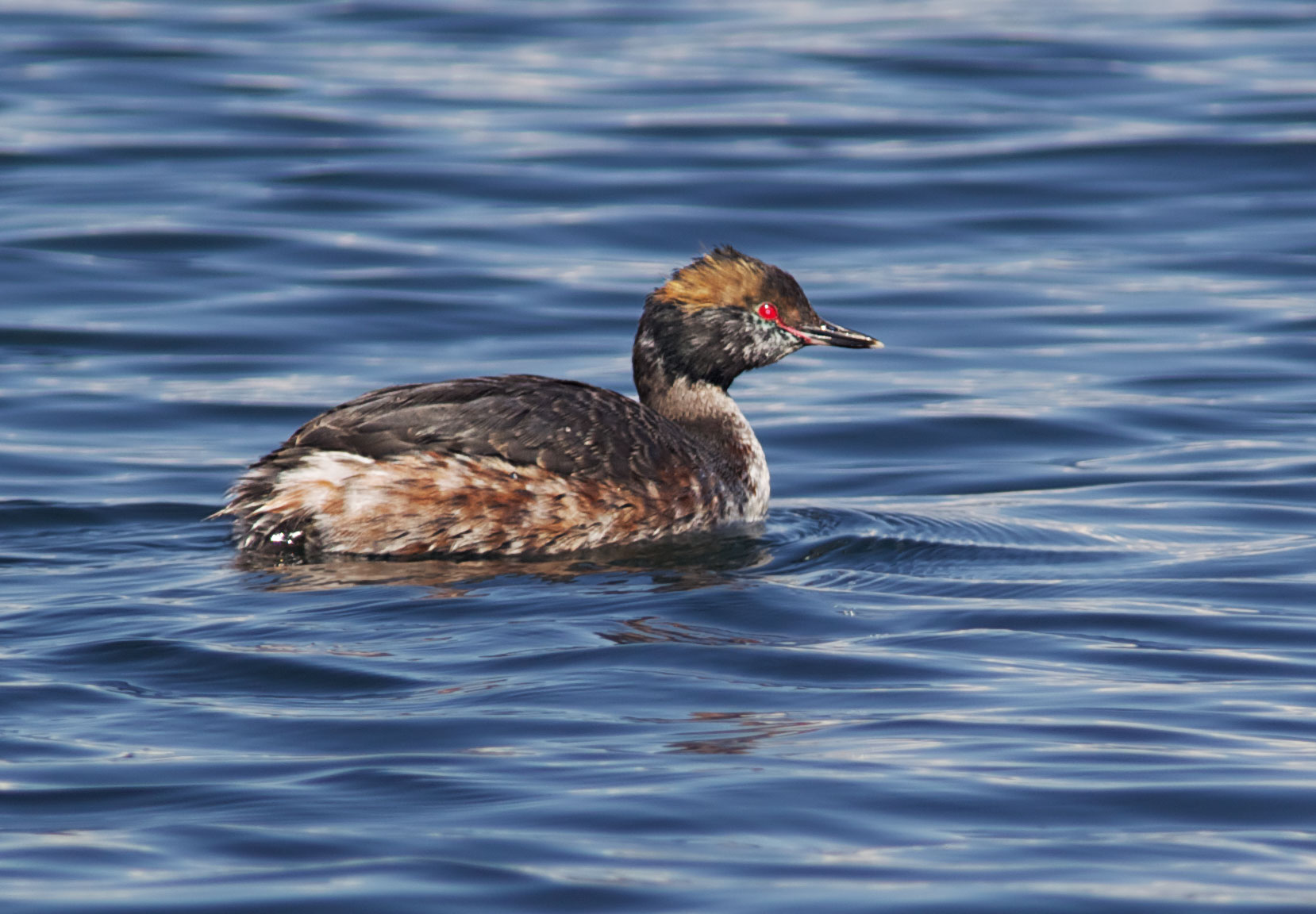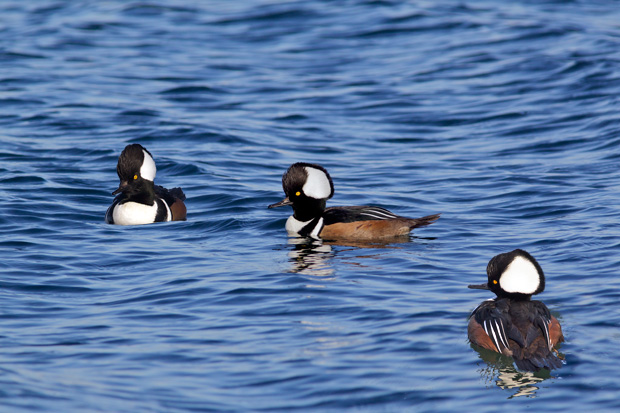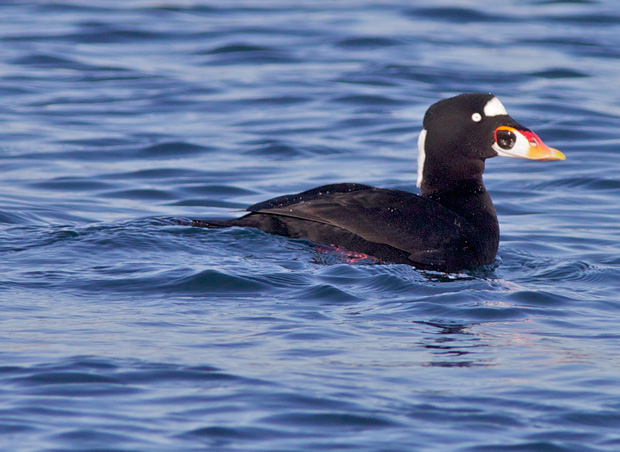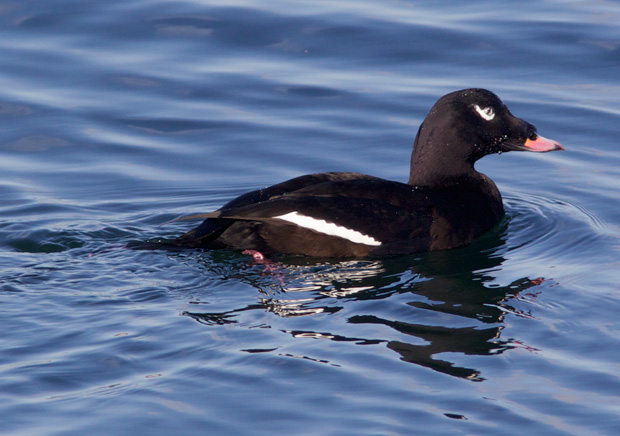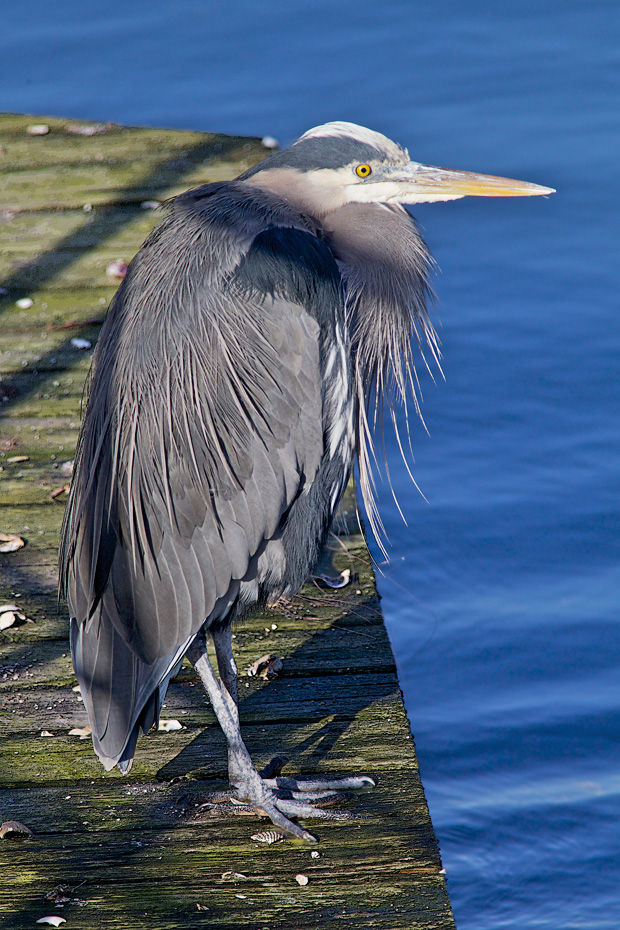While I was walking to the Port Orchard Public Dock to look for Horned Grebes, a gentleman, seeing the large camera around my neck, said, “You’ve got to get a picture of a seagull with a huge starfish in his mouth.” Naturally, I couldn’t resist the chance for any kind of good shot.
It was, to say the least, quite amazing.
Unfortunately, it was so close that I could not manage to fit the whole bird in the frame.
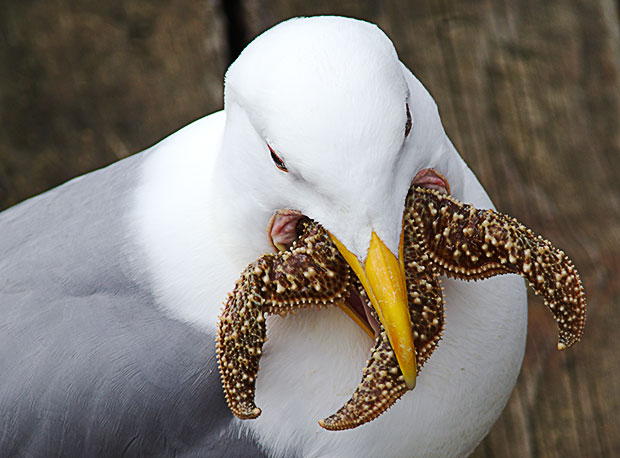
A little maneuvering, though, allowed me to show just how content the bird seemed with a starfish crammed in his throat,
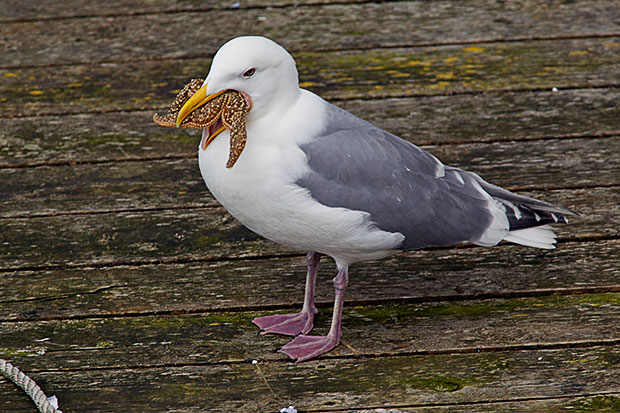
no matter how uncomfortable that seemed to me.
I thought I’d finished taking shots and headed down the dock, only to meet the bird a little later, with the starfish folded in half and so far down his throat that there was
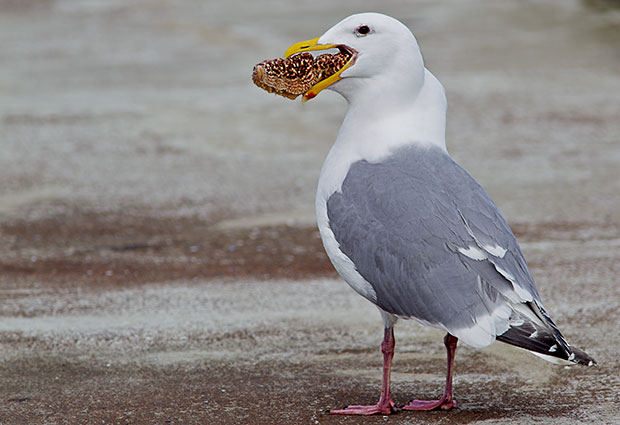
a clear bulge in the back of his neck.
If I hadn’t seen it with my own eyes, I’m not sure I would have believed it.

